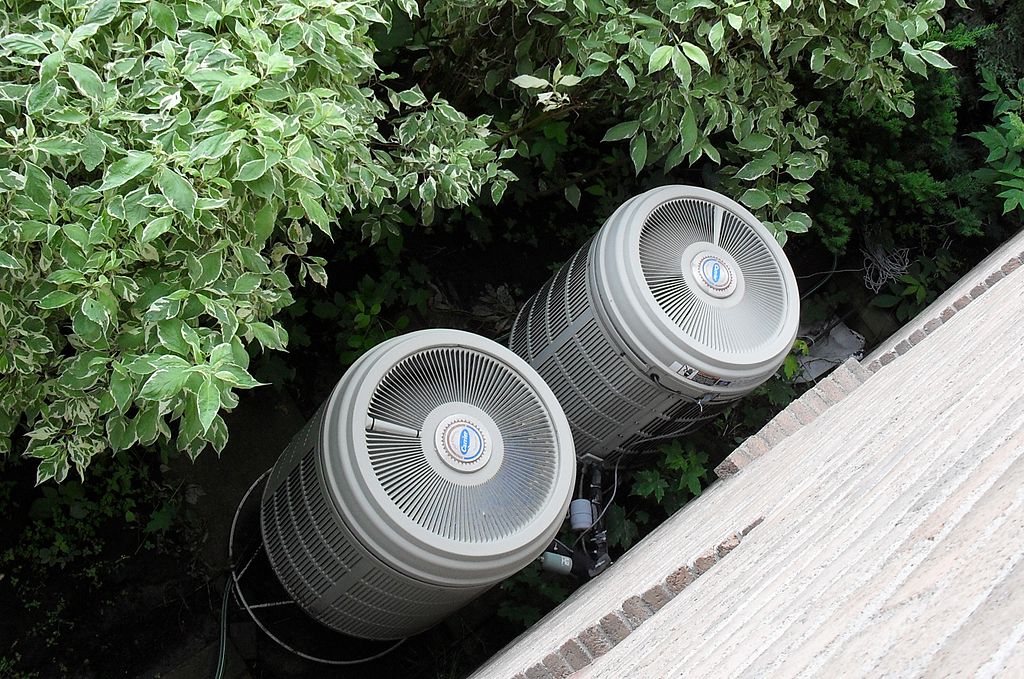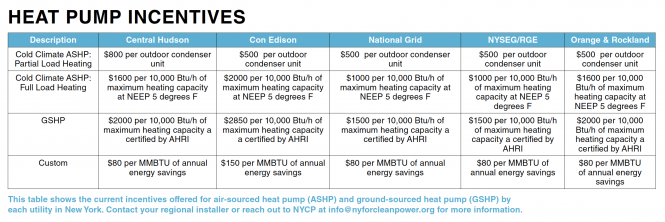Warm Feeling: Picking the Heat Pump that Makes Sense for You
By Michaela Ciavocco | Winter 2020 | Clean Power Guide
A heat pump uses electricity to run the same kind of refrigeration cycle that a refrigerator or air conditioner uses—except that a heat pump can transfer heat into or out of an entire building, making it possible to heat, cool, and dehumidify your space. Because they are electric, heat pumps provide more efficient heating and cooling than burning fossil fuels, making them good for the planet as well as for your building’s comfort.
There are two main types of heat pumps: ones that source their energy from the air, air source heat pumps (ASHPs); and ones that source their energy from the ground, ground source heat pumps (GSHPs). For example, in the winter, cold-climate ASHPs placed outside of the building will absorb heat from the air (yes, even though it feels cold to us there is still heat to absorb, down to about -15 degrees Fahrenheit). They transfer that heat (amplified by a compressor) to be distributed inside the building, either by another AC-looking unit (called a ductless mini split head), or central ductwork system.
Also known as geothermal, GSHPs are installed inside the building and concentrate the heat transferred from water circulating pipes in the ground. Most commonly, GSHPs distribute conditioned air via a central ductwork system but there are models that can produce hot and cold water too. The water-based GSHP systems don’t make very hot water but can be effective in radiant floors or when sent to a ductless hydronic fan coil, which is like a mini-split head but receives water rather than refrigerant.
Which one makes sense for you?
Generally speaking, the ideal candidates for a GSHP system have at least one of the following:
Expensive heating costs from heating oil and/or propane, electric baseboard—basically anything other than natural gas, since natural gas heating costs are subsidized by utility ratepayers and it makes less financial sense to switch to any electric heat pump system.
• The owners have and/or want central air.
• The building is under renovation or is new construction.
• The owners want to be carbon net zero.
• The owners don’t want to hear or see any outdoor equipment.
• There’s a larger budget for installation (although financing is available, retrofit systems—not new construction—average around $30,000 after utility and state incentives).
• Ideal candidates for ductless ASHP systems have at least one of the following:
—The owners want to supplement an existing heating system to reduce energy consumption, fossil fuel use and/or heating costs.
—The building has an open layout (few walls) and/or the owners do not mind that heating and cooling from the mini split head only spreads to one space (similar to a traditional window air conditioner).
—There is a lower budget for installation.

Here are some additional questions to keep in mind:
What is your current heating method? And what kind of coverage do you want?
In pure financial terms, anyone with a heating system other than natural gas is a good candidate for a heat pump, since the savings over time will compare favorably. If you’re replacing a natural gas system, the savings will take longer to capture but will still be there. GSHP have the capability to deliver heating and cooling throughout the building whereas ASHP systems generally only provide heating and cooling to designated open areas.
How recently constructed, and how well insulated is the building?
Heat pumps are sized depending on how much energy is required to heat and cool a building. A building without insulation needs much more energy to control the temperature, so insulation first is worth the investment. Your heat pump installer should be able to guide you to an energy efficiency provider.
What is your motivation for adopting heat pumps? Going totally net zero or simply reducing your carbon footprint?
Going net zero? Geothermal has the advantage of using less electricity to power. Air source systems are great to offset the majority of your heating costs and fossil fuel use in the winter, and serve as your air conditioning unit during the summer.
What is your budget?
Geothermal systems are more expensive than air source systems. That’s mainly because they cover the whole building and become a part of the structure itself, whereas ASHP systems involve a smaller, simpler installation. GSHPs are about $30,000, post-incentives. ASHPs mini-split systems typically cost around $4,000 per unit, and an average house may use two to four distribution units.

Michaela Ciavocco is program coordinator for New Yorkers for Clean Power. She can be reached at [email protected] for more information and recommendations.
